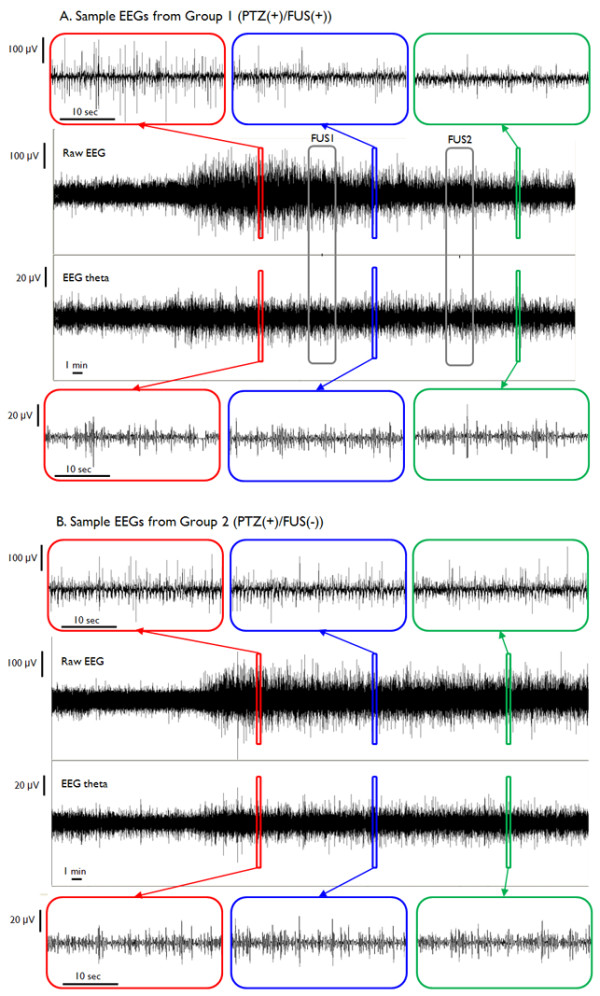Figure 3.

The sample time-courses of EEG recordings from the test groups. The representative example of EEG recordings from PTZ-induced epileptic rats (A) with sonication and (B) without sonication. In each EEG dataset, the upper signals represent unfiltered (raw) EEG data, and the lower signals show their corresponding theta-band activity. The insets of magnified windows represent EEG samples for 30 seconds in each highlighted time-window. Red boxes indicate an interval before the first sonication period, blue boxes indicate an interval between the first and the second sonication periods, and green boxes indicate an interval after the second sonication period. Note the changes in raw EEG spikes before, during, and after the sonication in the FUS-treated rat (see the upper red, blue and green boxes in (A)). The ictal activity during the pre-sonication period started to diminish along with each of the two sonication sessions (marked with gray boxes; FUS1-2) and was effectively suppressed after the second sonication (see the upper green box in (A)). Vertical scale bars indicate 100 μV in raw EEG signals and 20 μV in theta activity. Horizontal scale bars indicate a one-minute time scale (ten seconds for the insets).
